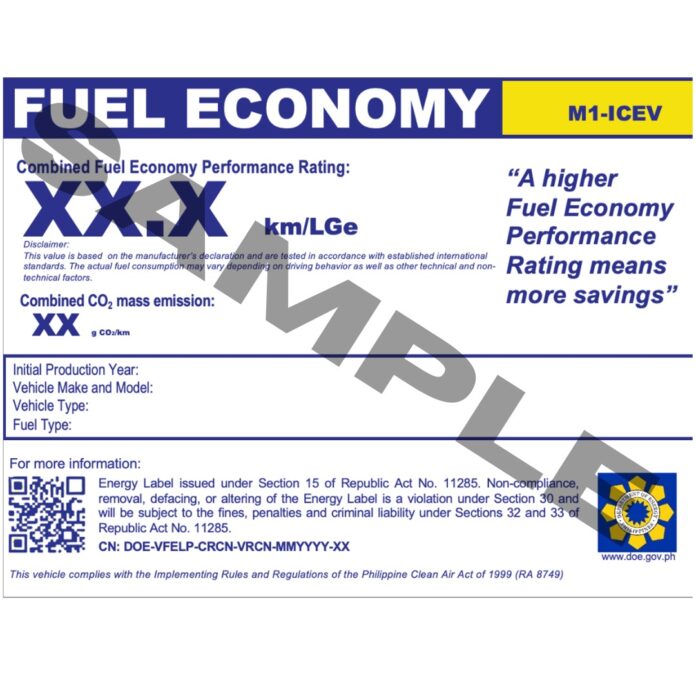In a bold move to enhance energy efficiency and reduce the carbon footprint of road transport, the Department of Energy (DOE) has mandated that all public and private vehicles must now display Fuel Economy Labels (FEL) and Fuel Economy Stickers (FES) under the new Vehicle Fuel Economy Labelling Program (VFELP).
This initiative, which affects both local manufacturers and importers, aims to provide consumers with critical information about a vehicle’s fuel performance, empowering them to make more environmentally-conscious purchasing decisions. The new dual-labeling system includes the removable FEL, offering key fuel economy data, and the fixed FES, which features a QR code for consumers to access further details about the vehicle’s fuel efficiency.
The program, which is supported by the Department of Environment and Natural Resources (DENR) and the Department of Transportation (DOTr), seeks to promote transparency and accessibility of fuel economy data. As vehicles are sold, buyers will have instant access to verified performance metrics, helping them understand not only their potential fuel savings but also their role in mitigating climate change.
The DOE’s Patrick Aquino highlighted the broader environmental and economic benefits of the program: “Knowing your vehicle’s fuel efficiency is not just about saving money; it’s about building a sustainable future. Every drop of fuel saved and every gram of greenhouse gas reduced contributes to the fight against climate change,” Aquino said.
The new labeling requirements are expected to create a ripple effect, incentivizing manufacturers to innovate toward more energy-efficient models, ultimately reducing national fuel consumption and emissions. While consumers will be equipped with better information, the registration process—including obtaining labels—will be handled by vehicle manufacturers, ensuring minimal impact on vehicle buyers.
The new policy applies only to vehicles that have not yet been sold, with company registrations valid for three years and vehicle registrations for each model valid for six years. Processing times for labels and registration are designed to be swift, ensuring minimal delays in getting vehicles to market.
With the goal of fostering a more sustainable future and reducing greenhouse gas emissions, the DOE’s VFELP signals a key step in the nation’s efforts to integrate fuel efficiency into its transportation sector.







